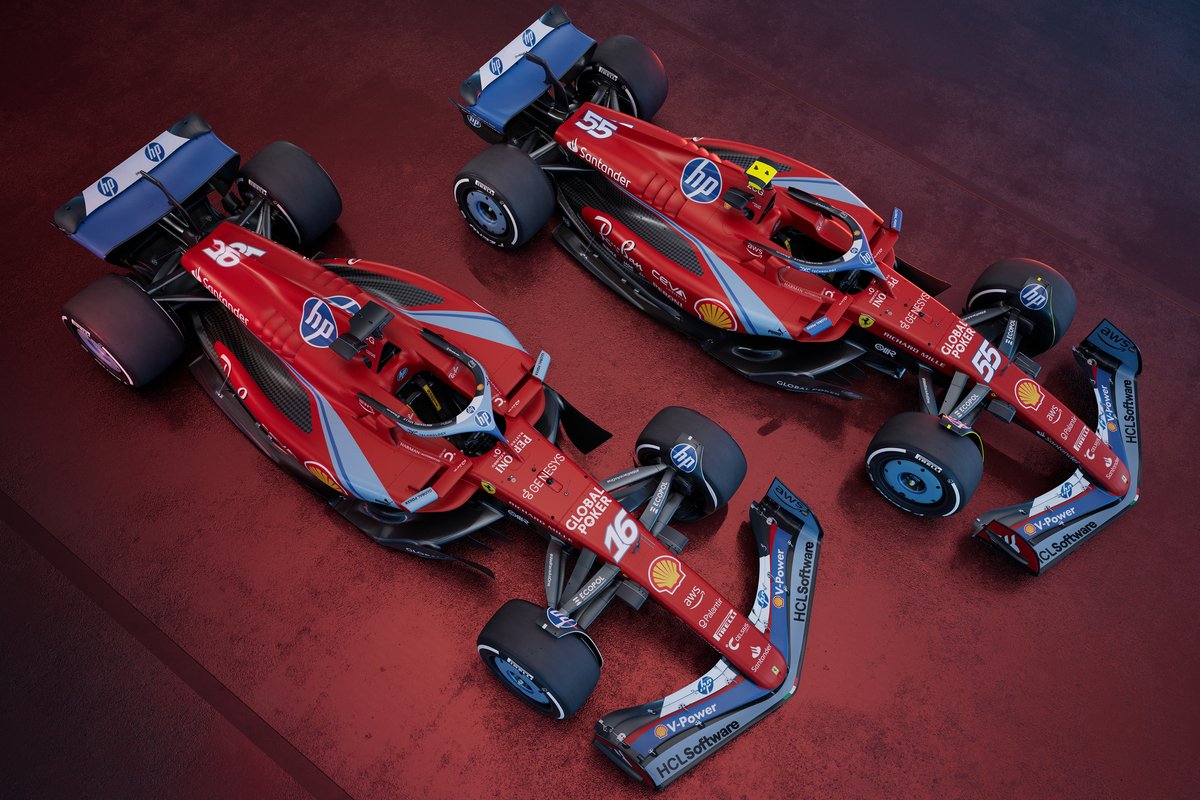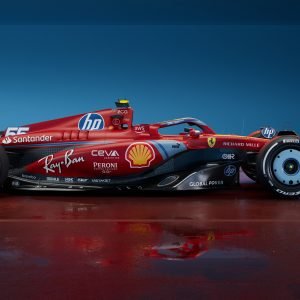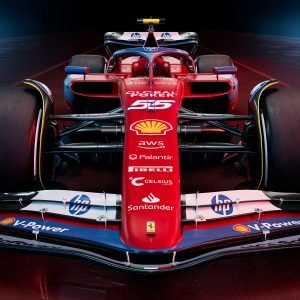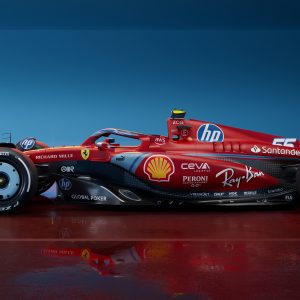

Ferrari had promised a two-tone blue design heading into the event, prompting speculation that the famed scarlet could be parked.
Instead, the Italian national racing colour remains but with splashes of blue across the car’s sidepods, front wing, and wheels.
There are also branding differences, with information technology brand HP taking a prominent position on the car’s airbox and wings.
In addition to the changes to the car, drivers Charles Leclerc and Carlos Sainz will sport blue racing overalls for the event.
Mechanics will also wear blue firesuits at points, the colour chosen to reflect the outfits worn by Alberto Ascari and Clay Regazzoni in the 1950s and 1970s, respectively.
“The upcoming Miami Grand Prix will be one to remember in the history of our team, as in Florida we will be celebrating our heritage through a unique livery, rediscovering two colours that are part of our history,” said team boss Fred Vasseur.
“It will also be a very special race as we are glad to welcome the arrival of our new title partner HP.
“Scuderia Ferrari and HP share many values, including a winning mentality and a clear line of thought that forms the basis of our partnership.
“Our two companies always strive for excellence and embrace technological innovation, key elements in achieving our respective goals.
“Like us, HP believes in the importance of ensuring that everyone in its organisation can give of their best, as that’s the only way to get great results.”
While Ferrari is synonymous with red racing cars, there have been examples where it has been represented by other colours in Formula 1.
Olivier Gendebien did so in 1961 at the wheel of a yellow Ferrari 156, entered by the Scuderia, for that year’s Belgian Grand Prix.
It was decked out in yellow, the national colour of Belgium, courtesy of Jacques Swaters, who picked up the cost of the entry.
Perhaps more famously, John Surtees clinched the 1964 world championship at the wheel of a white and blue Ferrari.
In that instance, Surtees drove a North American Racing Team-entered Ferrari 158 in the season’s final two races after Ferrari refused to enter.
The mark’s eponymous team owner, Enzo Ferrari, was at loggerheads with the sport’s governing body after it refused to homologate the 250 LM sportscar.
In response, he handed back Ferrari’s racing license and vowed the Scuderia’s red would never return to a race track – a stance that lasted just two grand prix.

































Discussion about this post